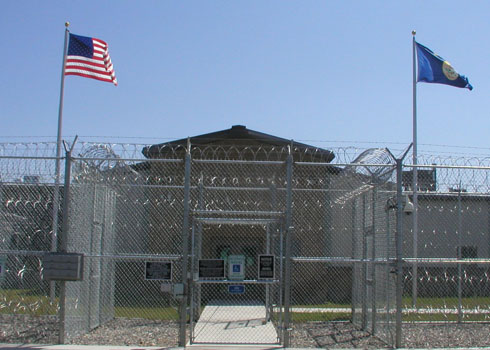We posted an investigative piece Monday about the back story on the empty jail in Hardin, MT, explaining how a consortium of companies made millions on the project that has netted exactly nothing for the struggling town.
But what about the $27 million in high-risk municipal bonds that were issued to fund the construction of the speculative jail in 2006 and 2007?
It looks like the Hardin jail may be something of an outlier among the projects completed by the consortium of businesses, led by a developer named James Parkey out of Texas, that pitched the idea of the jail, sold the bonds, then built the facility. That’s because the bondholders — including the muni fund of a big New York-based investment firm — have lost out on the project, along with the town.
The bonds in the Hardin case are so-called revenue bonds, as opposed to general obligation bonds, which are supported by taxes of the municipality. Revenue bonds, often used to build, say, stadiums, are backed by the projected revenue of the given enterprise.
The issuer in the Hardin case was not the city itself, but the Two Rivers Authority economic development agency. The companies that underwrote — that is, served as middle man for — the bonds took home a tidy profit of $1.6 million when the debt was issued in 2006. And a construction company was paid many millions to construct the facility.
But the bonds, which were not rated, went into default last year, which means the investors haven’t received interest payments.
For their part, those investors — high-yield muni-focused funds run by BlackRock, Lord Abbett, and Pioneer Investments, as of 2007, according to Bond Buyer — were looking for risk on the deal.
The interest rates on the bonds ranged from 6.250% to 7.625% for a 2027 maturity. The latter was priced over 325 basis points above the rate on the highest-rated muni bonds at the time, Bond Buyer reported.
In other words, high risk, high return. But perhaps not so risky as the Hardin project truly was.
“In some ways investors have to rely very heavily on the official statement, and an understanding of the official statement,” says Christopher “Kit” Taylor, who previously served as the chief regulator of the muni bond market as the head of the Municipal Securities Rulemaking Board.
But as we’ve reported, the official statement in the Hardin case included an economic feasibility study that has been criticized as flawed and marred by possible conflict of interest.
In other projects executed by the Parkey-led consortium, the bond investors have fared better. But poor towns have failed to reap the benefits they were promised.
A June episode of Dan Rather Reports looked at a jail built in La Salle County in south Texas.
Rather reported on the 500-bed La Salle County Detention Center in Encinal:
The detention center does bring in money but not as much as county leaders thought. And the county has spent hundreds of thousands of dollars in legal fees for lawsuits over operations, maintenance and shoddy construction. And then there’s the town’s water and sewer systems. So overwhelmed by the detention facility that when the wind gets up, Encinal smells of raw sewage. It will cost several million dollars to repair, and more money to install another water well…
In other words, there are lots of expenses and, when it comes to profits, the town gets in line behind the prison operator and the bondholder.
Not only that, but many of the jobs in privately run facilities pay about as much as the local Wal-Mart, Rather reported.
What are the companies’ success rate in terms of making good on promises to towns that build jails? It’s hard to say, especially because Parkey and the other companies involved haven’t responded to requests for comment.






